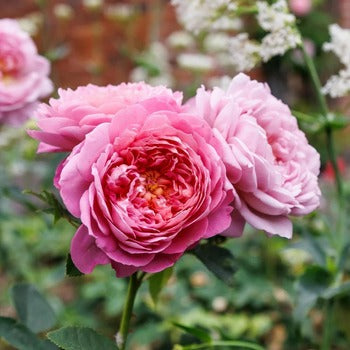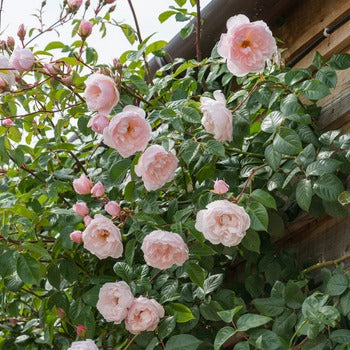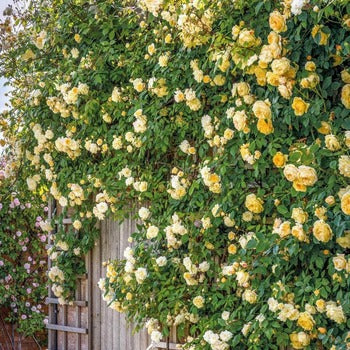inspiration
How to Make a Foraged Rose Hip Christmas Wreath
A winter walk often reveals more than you expect, especially when you start gathering what the season gives you. For generations, people have stepped out into the darker months to collect what the hedgerows have to offer: evergreens, seedheads, berries and, of course, rose hips. A wreath made from these...
Read more-
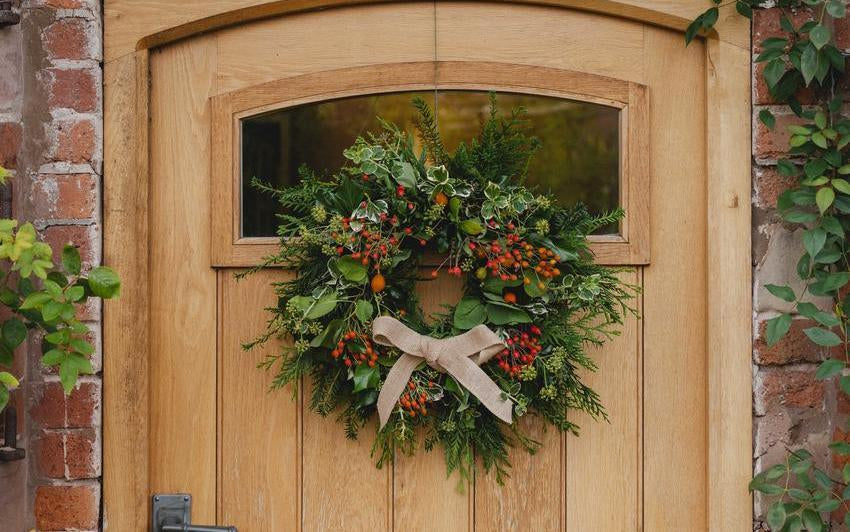 How to Make a Foraged Rose Hip Christmas WreathA winter walk often reveals more than you expect, especially when you start gathering what the season gives you. For generations, people have stepped out into the darker months to collect what the hedgerows have to offer: evergreens, seedheads, berries and, of course, rose hips. A wreath made from these finds feels honest and seasonal, shaped by the garden and the landscape rather than by anything store-bought. It is a small way of bringing winter’s character indoors.Read more
How to Make a Foraged Rose Hip Christmas WreathA winter walk often reveals more than you expect, especially when you start gathering what the season gives you. For generations, people have stepped out into the darker months to collect what the hedgerows have to offer: evergreens, seedheads, berries and, of course, rose hips. A wreath made from these finds feels honest and seasonal, shaped by the garden and the landscape rather than by anything store-bought. It is a small way of bringing winter’s character indoors.Read more -
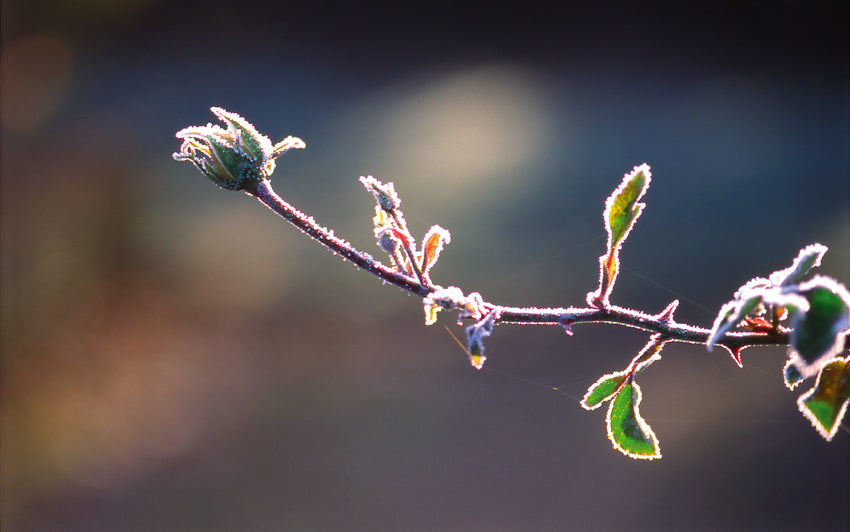 Roses of Christmas PastIn the stillness of December, when frost feathers the garden and bare branches trace strong silhouettes against pale skies, it is easy to think of another age. A Dickensian Christmas feels close at hand: lantern light on cobbled streets, mist in the air, and behind brick walls and wrought-iron gates, old roses resting through the cold. Though they are bare now, many of the varieties we grow today were already cherished in Victorian times, rooted in gardens that knew the same cold, the same darkness, and the same deep anticipation of return.Read more
Roses of Christmas PastIn the stillness of December, when frost feathers the garden and bare branches trace strong silhouettes against pale skies, it is easy to think of another age. A Dickensian Christmas feels close at hand: lantern light on cobbled streets, mist in the air, and behind brick walls and wrought-iron gates, old roses resting through the cold. Though they are bare now, many of the varieties we grow today were already cherished in Victorian times, rooted in gardens that knew the same cold, the same darkness, and the same deep anticipation of return.Read more -
 Wild Rose Hips in Winter: Reading the Plants Behind ThemWinter has a way of showing roses as they really are. With the leaves down and the flowers long gone, the plants stand in their most open, honest form. This is when the hips become noticeable. On wild species roses, these fruits are not just a seasonal leftover. They are small clues about the landscapes that shaped each plant. If you look closely, they reveal far more than you might expect.Read more
Wild Rose Hips in Winter: Reading the Plants Behind ThemWinter has a way of showing roses as they really are. With the leaves down and the flowers long gone, the plants stand in their most open, honest form. This is when the hips become noticeable. On wild species roses, these fruits are not just a seasonal leftover. They are small clues about the landscapes that shaped each plant. If you look closely, they reveal far more than you might expect.Read more -
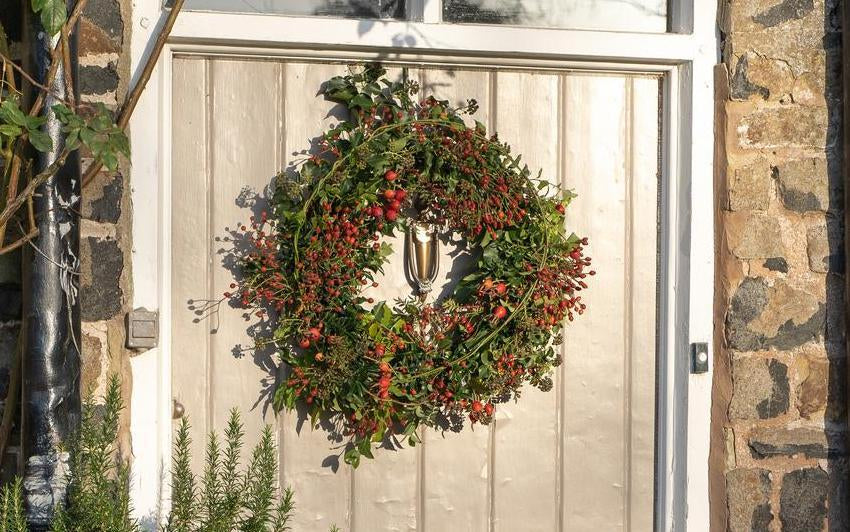 Using Rose Hips for Christmas: Natural Crafts and Winter Garden InspirationAs autumn settles and the days take on a crisp, silvery light, the garden begins to quieten. Blooms fade, leaves fall, and roses offer their final gesture of the year. Their hips, glowing in reds and soft oranges, brighten bare stems like small lanterns and bring warmth to the stillness of the season. These fruits have long carried a nostalgic charm, recalling winter walks, simple festive gatherings and the comforting traditions of Christmas. Rose hips are easy to collect. Choose firm, brightly coloured hips and snip them with a short length of stem attached. A gentle rinse is enough to prepare them for craft or cookery.Read more
Using Rose Hips for Christmas: Natural Crafts and Winter Garden InspirationAs autumn settles and the days take on a crisp, silvery light, the garden begins to quieten. Blooms fade, leaves fall, and roses offer their final gesture of the year. Their hips, glowing in reds and soft oranges, brighten bare stems like small lanterns and bring warmth to the stillness of the season. These fruits have long carried a nostalgic charm, recalling winter walks, simple festive gatherings and the comforting traditions of Christmas. Rose hips are easy to collect. Choose firm, brightly coloured hips and snip them with a short length of stem attached. A gentle rinse is enough to prepare them for craft or cookery.Read more -
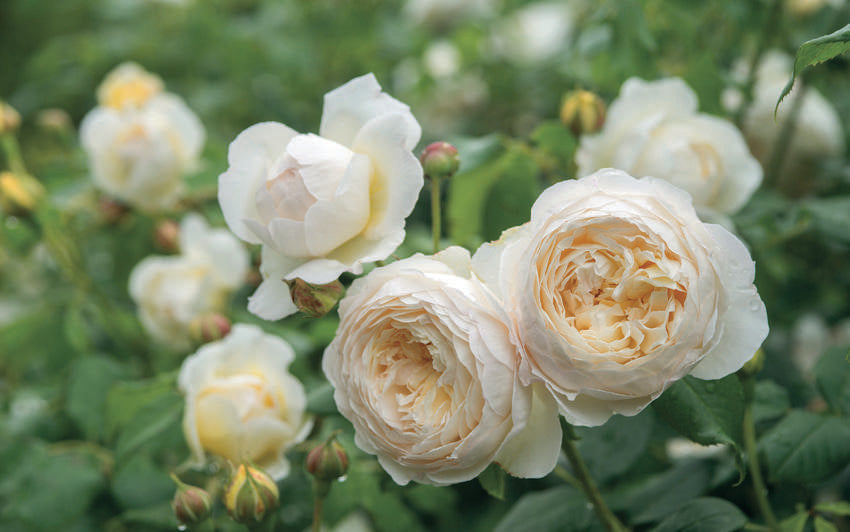 Roses in the Shadow: English Roses for Shaded SpotsWhen we speak of “shade” in the garden, it is important to be precise. Few roses will prosper in deep shadow, but many are perfectly happy with four or five hours of sunlight a day. Think of those north-facing walls or quiet spots that bask in morning or evening light. These are not wasted spaces; with the right roses, they can become some of the most enchanting areas of the garden.Read more
Roses in the Shadow: English Roses for Shaded SpotsWhen we speak of “shade” in the garden, it is important to be precise. Few roses will prosper in deep shadow, but many are perfectly happy with four or five hours of sunlight a day. Think of those north-facing walls or quiet spots that bask in morning or evening light. These are not wasted spaces; with the right roses, they can become some of the most enchanting areas of the garden.Read more -
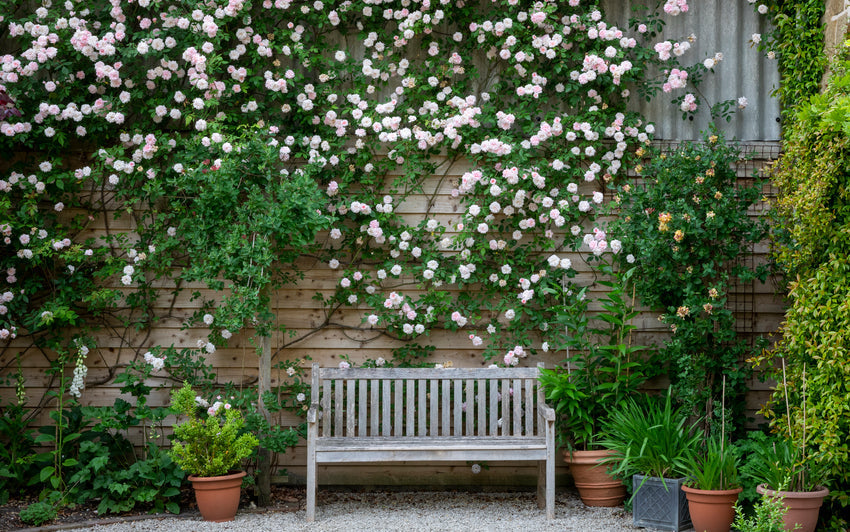 Creating Living Walls with Climbing RosesA living wall has a way of transforming a space, turning a simple surface into a quiet theatre of petals, scent and shifting light. When English Roses form the foundation, the display becomes generous and enduring. Their repeat blooms, soft colours and naturally graceful habit bring depth and character to any vertical space, whether it is a boundary fence, a warm house wall or a tucked-away corner that needs a little life.Read more
Creating Living Walls with Climbing RosesA living wall has a way of transforming a space, turning a simple surface into a quiet theatre of petals, scent and shifting light. When English Roses form the foundation, the display becomes generous and enduring. Their repeat blooms, soft colours and naturally graceful habit bring depth and character to any vertical space, whether it is a boundary fence, a warm house wall or a tucked-away corner that needs a little life.Read more -
 Highgrove Gardens: A Garden with Purpose and PoiseThere is a sense of calm purpose to Highgrove. The private residence of His Majesty The King is also home to one of Britain’s most admired organic gardens, a living expression of harmony between beauty and sustainability. Every plant is part of a greater whole. Every decision is made with the long view in mind.Read more
Highgrove Gardens: A Garden with Purpose and PoiseThere is a sense of calm purpose to Highgrove. The private residence of His Majesty The King is also home to one of Britain’s most admired organic gardens, a living expression of harmony between beauty and sustainability. Every plant is part of a greater whole. Every decision is made with the long view in mind.Read more -
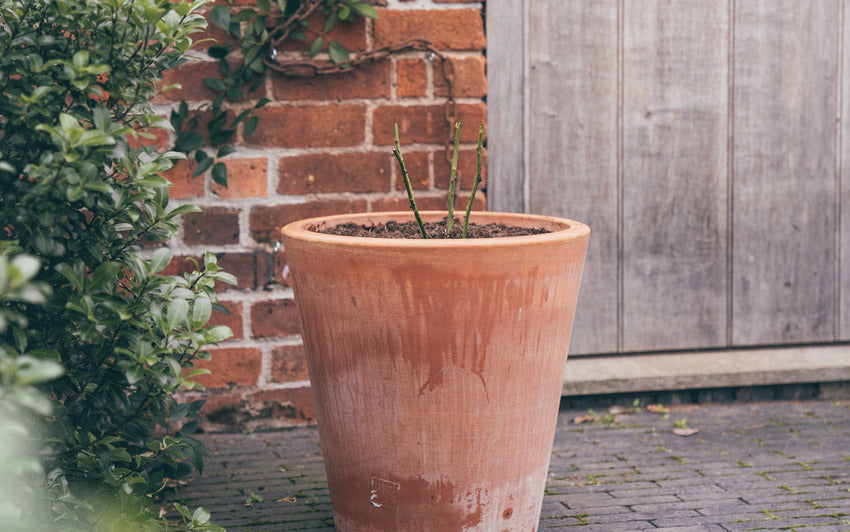 Planting Bare Root Climbing Roses in a Pot: Step-by-StepBare root climbing roses bring vertical grace and fragrance to patios, terraces and courtyards, creating structure and height where space is limited. When planted carefully in a large container, they will flourish and flower generously, rewarding you with arching stems covered in blooms from early summer through to autumn.Read more
Planting Bare Root Climbing Roses in a Pot: Step-by-StepBare root climbing roses bring vertical grace and fragrance to patios, terraces and courtyards, creating structure and height where space is limited. When planted carefully in a large container, they will flourish and flower generously, rewarding you with arching stems covered in blooms from early summer through to autumn.Read more -
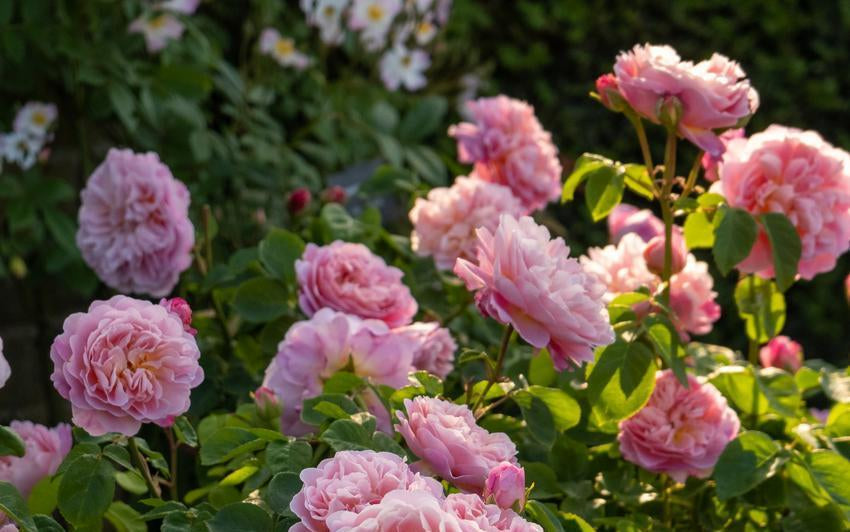 The Perfumed Garden: English Roses That Fill the Air with FragranceSoft light spills across a quiet garden, where the hum of bees threads through the still air and petals tremble with the morning dew. There is a hush here, a sense that time itself slows, inviting the senses to wander and the spirit to rest. In these moments, the perfume of roses becomes more than a fragrance. It is at once familiar and fleeting, a memory, a mood, a gentle companion to the day, recalling childhood gardens, evening walks and the warmth of the sun. Among our English Roses, some are distinguished not only by their beauty but by the generosity of their perfume.Read more
The Perfumed Garden: English Roses That Fill the Air with FragranceSoft light spills across a quiet garden, where the hum of bees threads through the still air and petals tremble with the morning dew. There is a hush here, a sense that time itself slows, inviting the senses to wander and the spirit to rest. In these moments, the perfume of roses becomes more than a fragrance. It is at once familiar and fleeting, a memory, a mood, a gentle companion to the day, recalling childhood gardens, evening walks and the warmth of the sun. Among our English Roses, some are distinguished not only by their beauty but by the generosity of their perfume.Read more -
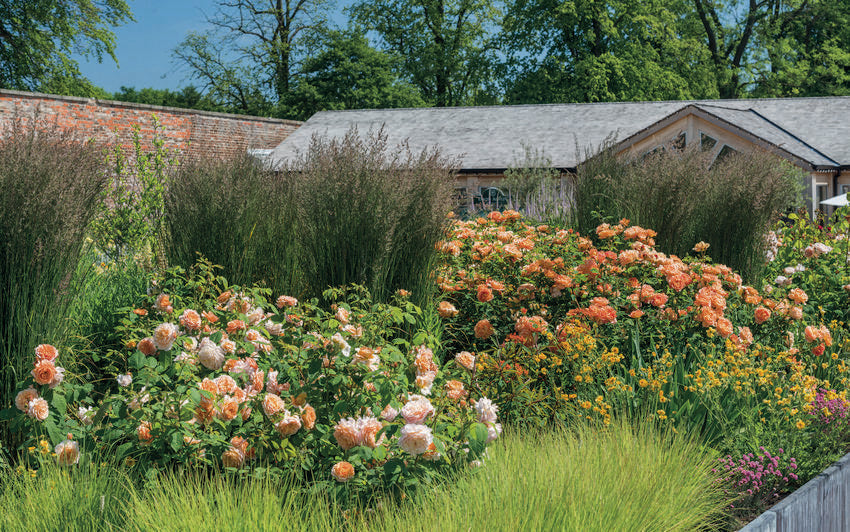 Drifts of Colour Planting English roses in threes, fives or moreWhen it comes to creating an interesting garden, the way you arrange your plants can make all the difference. English roses are a perfect example of this with their beautiful blooms and fragrance. For truly captivating displays, consider planting them in clusters of three or five, especially if you select the same variety.Read more
Drifts of Colour Planting English roses in threes, fives or moreWhen it comes to creating an interesting garden, the way you arrange your plants can make all the difference. English roses are a perfect example of this with their beautiful blooms and fragrance. For truly captivating displays, consider planting them in clusters of three or five, especially if you select the same variety.Read more -
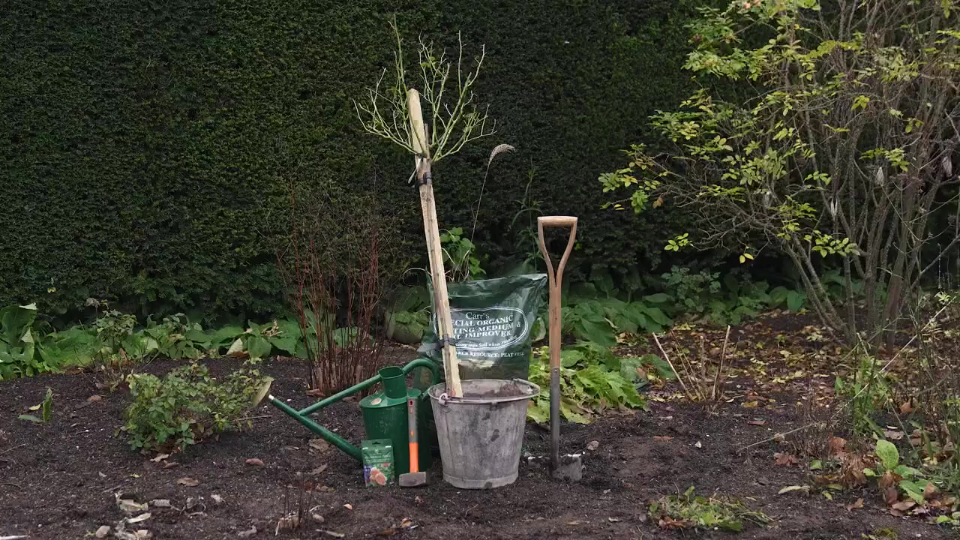 How to Plant Bare Root Standard Roses: Step-by-StepStandard roses, also known as tree roses, bring structure, height and a sense of grace to the garden. Their blooms are carried high on slender stems, creating a striking focal point among lower planting. Whether standing proudly in a border or adding formality beside a doorway, they bring charm and refinement to any setting.Read more
How to Plant Bare Root Standard Roses: Step-by-StepStandard roses, also known as tree roses, bring structure, height and a sense of grace to the garden. Their blooms are carried high on slender stems, creating a striking focal point among lower planting. Whether standing proudly in a border or adding formality beside a doorway, they bring charm and refinement to any setting.Read more -
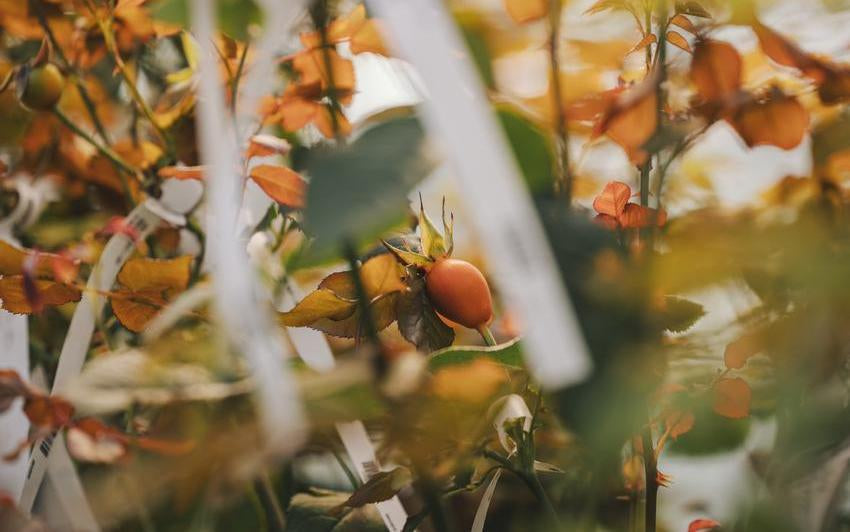 The Beauty of Ripening Hips: A Season of Promise in the Breeding GlasshousesOur breeding team shares what this special season means to them, as the hips ripen in the glasshouses and the next generation of roses begins its journey.Read more
The Beauty of Ripening Hips: A Season of Promise in the Breeding GlasshousesOur breeding team shares what this special season means to them, as the hips ripen in the glasshouses and the next generation of roses begins its journey.Read more -
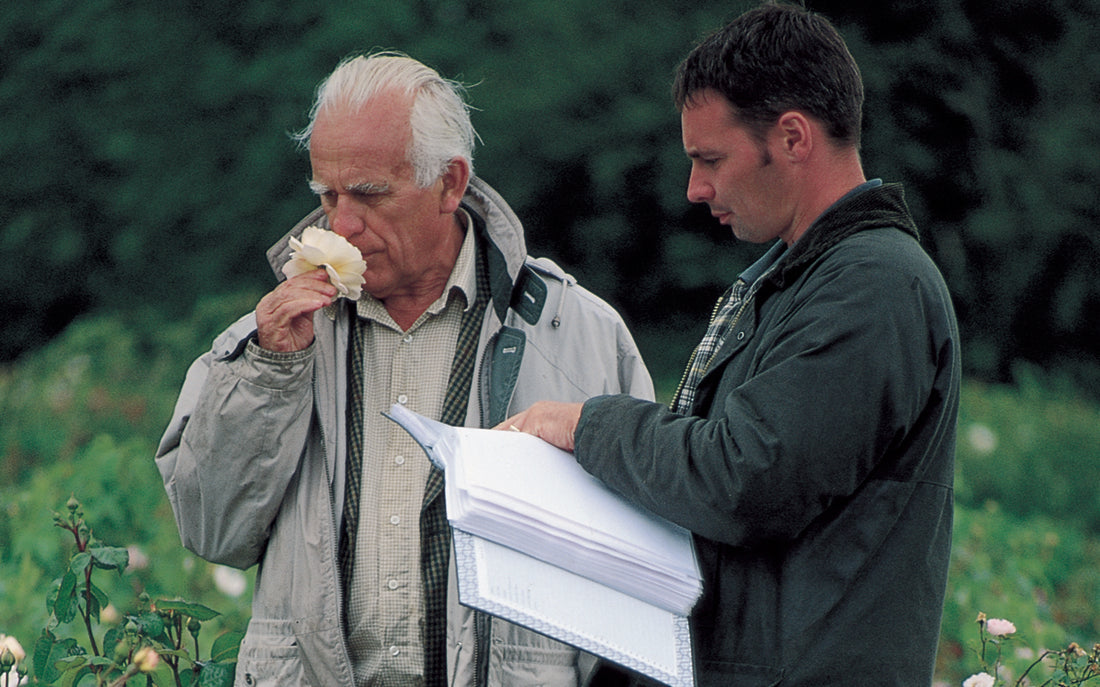 Heritage of Bare Root Roses: From the Kitchen Table to Gardens Around the WorldThe story of David C. H. Austin’s bare root roses begins not in grand gardens or greenhouses, but in the heart of a family home - at the kitchen table of Bowling Green House in Shropshire. It was here that a young man, captivated by the beauty of Old Roses, began to imagine something new: roses that would combine the grace and fragrance of the past with the reliable flowering of modern varieties.Read more
Heritage of Bare Root Roses: From the Kitchen Table to Gardens Around the WorldThe story of David C. H. Austin’s bare root roses begins not in grand gardens or greenhouses, but in the heart of a family home - at the kitchen table of Bowling Green House in Shropshire. It was here that a young man, captivated by the beauty of Old Roses, began to imagine something new: roses that would combine the grace and fragrance of the past with the reliable flowering of modern varieties.Read more
Showing 13 of 138 items

